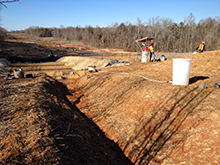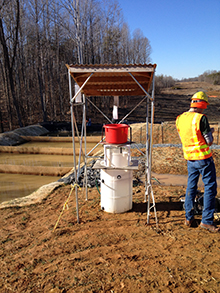Current Research
Tillage and Amendments to Improve Construction Site Soil Properties
Soils on construction sites are usually made up of subsoil materials with low fertility and organic matter and which may have been compacted. This creates problems with vegetation establishment and can lead to poor infiltration and root growth. We’ve been experimenting with various levels of tillage and different amendments to alleviate these problems, with the added benefit of reducing runoff into stormwater systems. Our studies have demonstrated that tillage can improve infiltration 3-5X and that this is maintained for at least several years, the longest we’ve measured it. Vigorous vegetation is needed to maintain this effect, and incorporating compost can be beneficial. Infiltration rates of 20-30 cm per hour have been common in a variety of soils around North Carolina, but mower traffic can greatly reduce this within the wheel track. Current research is focused on potential benefits of using wildflowers instead of grass in strips of high-infiltration areas along roadsides.
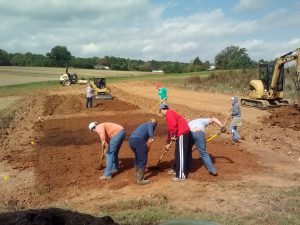
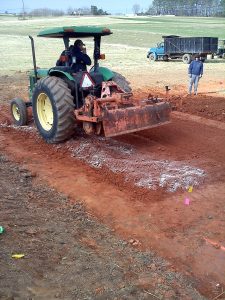
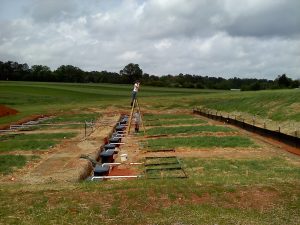
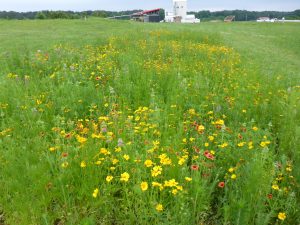
Tackifiers for Straw Applied for Erosion Control
There have been a number of recommended products to replace the asphalt that used to be commonly used to hold straw in place, but no testing of their effectiveness. In this project we tested a wide variety of products, including various
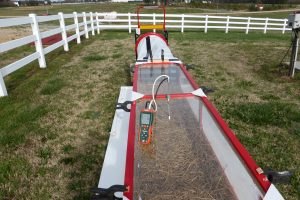
hydromulches, glues, and polyacrylamide for their ability to withstand winds up to 50 mph in a wind tunnel. The hydromulches and plantago glue worked well, holding the straw to close to the maximum wind speed. The paper-based hydromulch would be recommended primarily because it is the least expensive.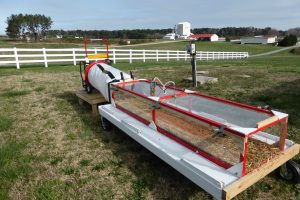
Advanced Best Management Practices for Maximum Erosion, Sediment, and Turbidity Control
We have developed and tested a number of approaches to reducing sediment in construction site runoff and are deploying these on construction sites to determine how well they work. Active construction sites are particularly challenging because of the constant changes as grading and building progresses, so this “real world” project will provide guidance on the best approaches to successful designs and installations.
Evaluation of Ground Covers on Construction Sites
There are a wide variety of products used as ground covers, including blown materials (mostly straw), hydraulically applied fibers, and erosion control blankets. In addition, applying polyacrylamide along with these ground covers has great potential for further erosion reduction. We have a continuous program of evaluating this for both erosion reduction and vegetation establishment.
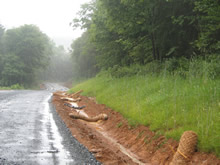
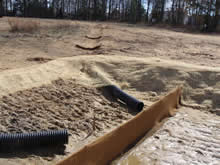
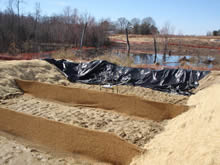
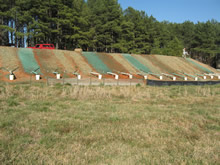
Channel Lining for Erosion Control
When construction site stormwater is collected into temporary channels, some form of lining is needed to prevent erosion in them. We are testing several options to achieve channel stabilization: jute netting, jute netting with polyacrylamide applied underneath, excelsior blankets, and a spray-on concrete product. Tests are being conducted both under controlled conditions (a simulated channel) and in the field on active construction site
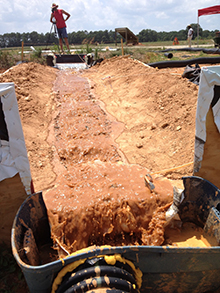
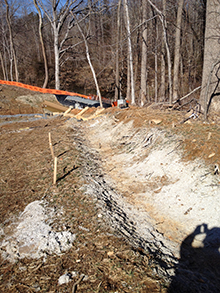
Alternative Methods for Dosing Construction Site Stormwater with Polyacrylamide
Applying polyacrylamide (PAM) powder to fiber check dams is a well-proven method of reducing turbidity in construction site stormwater. We are also exploring alternative methods which may provide more control over the dosing process. Two examples are shown below, one using a simple float valve system and a weir, and the other is a rain-driven system developed in New Zealand. Both involve dissolved PAM, which is good because it reacts quickly with the suspended solids. The drawbacks are that the solutions can freeze and have to be replenished after each storm. We are interested in determining if the benefits are worth the effort
